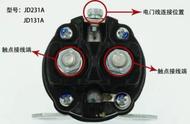
1. Anyone _________ bags, boxes, or whatever, was stopped by the police.
A. seen carry B. seen carrying
C. saw to carry D. saw carrying
【赏析】此题答案选B,anyone seen carrying bags…为 anyone who was seen carrying bags 之略,其中过去分词短语 seen carrying bags … 用作定语修饰代词 anyone。另外,句中的 who was seen carrying bags 为 see sb doing sth 这一结构的被动式。
2. Now everyone here was working hard and doing what they could _________ more money.
A. make B. to make
C. making D. made
【赏析】此题容易误选A。有的同学一看到空格前的情态动词 could 就断定此处应填动词原形 make。其实正确答案应是B,此句为省略句,即在 could 后省略了动词 do,若把句子补完整应为Now everyone here was working hard and doing what they could do to make more money,即句中的不定式短语(to make more money)是用作目的状语的,而不是与情态动词(could)一起构成谓语。请再看类似例句:
(1) My parents did what they could _________ my aunt and uncle.
A. help B. to help
C. helping D. helped
(2) He read what he could _________ his knowledge.
A. widen B. to widen
C. widening D. widened
以上两题均选B,即选不定式,且此不定式为目的状语。但是,同学们若据此形成思维定势,也会麻烦。为此,请再看两题:
(3) He ran as fast as he could _________to catch the bus.
A. hope B. to hope
C. hoping D. hoped
此题的最佳答案不是B,而是C,其中的现在分词短语 hoping to catch the bus 用作伴随状语,即一边跑一边希望能赶上早班车。但是,如果选B,将 to hope to catch the bus 视为目的状语行不行呢?不行。因为“他拼命地跑”目的是“为了赶上公共汽车”,而不是“为了希望赶上公共汽车”,换句话说,将“希望”作为“目的”不妥。因为同样的原因,下面一题也应选 hoping:
He studied as hard as he could _________ to enter a good college.
A. hope B. to hope
C. hoping D. hoped
(4) He spent every minute he could _________ foreign languages.
A. study B. to study
C. studying D. studied
此题也应选C,但是,它与上题选现在分词 hoping 表伴随有所不同,此题的 studying 其实与其前的动词 spend 有关,即套用的是“spend 时间或金钱 (in) doing sth”这一句型。
3. All her time _________ experiments, she has no time for sports.
A. devoted to do B. devoted to doing
C. devoting to doing D. is devoted to doing
【赏析】此题最佳答案为B。现分析如下:
(1) devote 意为“致力于,献身于”,主要用于 devote…to…或be devoted to,其中的to 是介词,不是不定式符号,故后接动词时要用动名词,不用不定式。
(2) 选A错误:若将 do 改为 doing 则可以。
(3) 选B正确:all her time devoted to doing experiments为独立主格结构,用作状语。
(4) 选C错误:因为all her time 与 devote 为被动关系,故应将devoting改为devoted。
(5) 选D错误:若单独看 All her time is devoted to doing experiments,此句并没有错,但问题是逗号前后两个简单句没有必要的连接方式,所以从整体上看仍不对,假若在后一句的句首加上and或so,则可选D,或将D中的is 改为 being也可以。
4. “What made her struggle _________ an artist so hard?” “_________ she was a woman.”
A. became, 不填 B. to become, 不填
C. become, That D. to become, That
【赏析】此题容易误选C,想当然地认为第一空应填 become (不带to),是因为其前有使役动词 made。其实,此题应选D,在 What made her struggle to become an artist so hard? 一句中,what 是句子主语,made 是谓语,her struggle to become an artist 是宾语 (其中的不定式 to become an artist 是修饰her struggle 的定语),so hard 是宾语补足语。许多同学误选C是将 her struggle 看作宾语,而将 become an artist 看作是宾语补足语,照此分析,so hard 又是什么成分呢?第二空填 That,用以引导主语从句 (此 that 不可省略),其后的谓语和宾语等被省略,若补充完整,即为 That she was a woman made her struggle to become an artist so hard.

真像我以前的英语老师
5. I found I could easily make myself _________ by using sign language.
A. understood B. understand
C. to understand D. being understood
【赏析】答案选A,但容易误选B,即硬套“make 名词或代词 动词原形”这一结构。但是对于该结构同学们忽略了一点,就是该结构中的名词或代词应与其后动词有逻辑上的主谓关系,而对于上面一题,myself 与动词 understand 显然不是主谓关系,而是动宾关系,或者说是被动关系,故此时的动词应用过去分词表被动。又如:
(1) As a teacher, you should make yourself _________.
A. respect B. respecting
C. respected D. to respect
(2) He spoke loudly so as to make his voice _________.
A. hear B. hearing
C. heard D. to hear
(3) Do you know what made her so _________?
A. frighten B. frightening
C. frightened D. to frighten
答案均选C,即用过去分词表示被动意义(其中 frightened 为过去分词转化来的形容词)。
6. Once your business becomes international, _________ constantly will be part of your life.
A. you fly B. your flight
C. flight D. flying
【赏析】最佳答案为D。由于空格后出现了constantly这一副词,这就说明不能选B或C,因为B、C均为名词,不能受副词 constantly 的修饰。A和D均是可能的,因为其中有动词 fly。但若选A,you fly 是一个主谓结构,与其后的谓语 will be 相冲突,所以只能选D,即动名词flying在此用作主语。
7. Not only should you get used _________ under difficult conditions but you also you pay more attention _________ your work well.
A. to work, to do B. to working, to doing
C. to work, to doing D. to working, to do
【赏析】正确答案为B,因为 get used to与pay attention to 这两个结构中的to均为介词,不是不定式符号,故后接动词时要用动名词,不能用动词原形。类似地,以下各结构中的 to 也是介词,不是不定式符号,后接动词时也应用动名词,而不是动词原形:
look forward to doing sth 盼望做某事
be opposed to doing sth 反对做某事
object to doing sth反对做某事
stick to doing sth 坚持做某事
get down to doing sth 开始做某事
take to doing sth 喜欢上做某事
admit to doing 承认做了某事
pay attention to doing sth 注意做某事
devote one’s time to doing sth 把某人的时间用于(奉献于)做某事
be equal to doing sth 等于做某事,能胜任做某事
What do you say to doing sth 你认为做某事怎么样
8. “Do you have anything more _________, sir?” “No. You can have a rest or do something else.”
A. typing B. to be typed
C. typed D. to type
【赏析】此题容易误选D,根据 have sth to do 这一常用结构推出。其实,最佳答案是B。确实,在“have 宾语 不定式”结构中,用作定语的不定式通常用主动式表示被动含义,如 I have some clothes to wash等,即尽管其中的 some clothes 与其后的不定式 to wash 具有被动关系,但却习惯上用主动式表示被动意义。但值得指出的是,这类句型的主语与其后的不定式具有主动关系,如 I have some clothes to wash 中的 to wash 就是由该句主语 I 来完成的。而上面一题的情形有所不同,即其中的 to type 这一动作不是由句子主语 you来完成的,而是由说话者“我”来完成的。比较:
Are you going to Shanghai? Do you have anything to take to your son? 你要去上海吗?你有什么东西要带给你儿子吗?
















